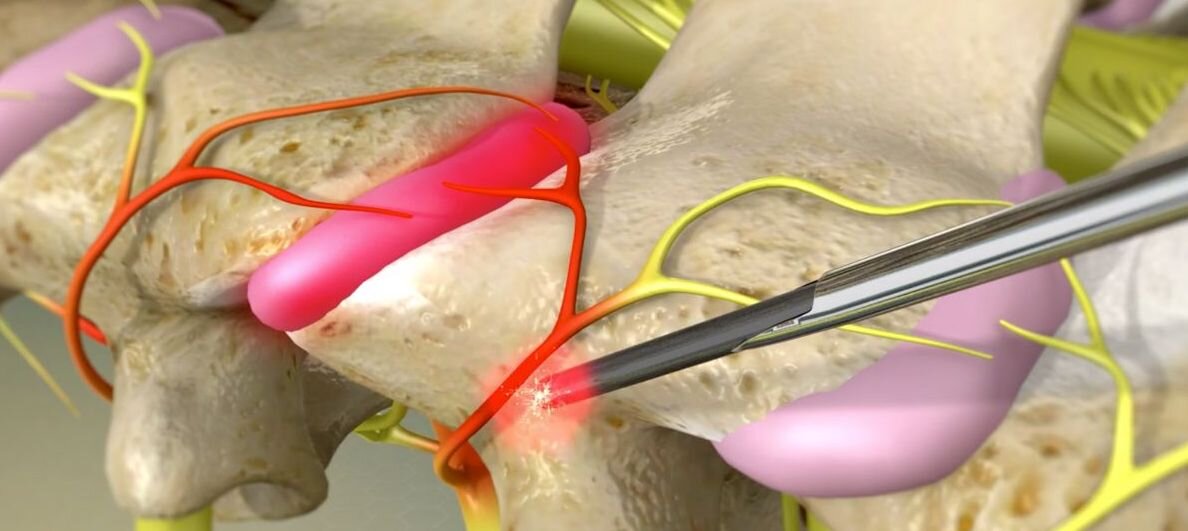
Radiofrequency Ablation
Inactivating nerves for long-term pain relief
What is Radiofrequency Ablation?
Radiofrequency ablation, also called rhizotomy, is a nonsurgical, minimally invasive procedure that uses heat to reduce or stop the transmission of pain. Radiofrequency waves are used to produce heat on specifically identified nerves. The nerves to be ablated are identified through injections of local anesthesia prior to the procedure (Medial Branch block or Genicular Nerve Block). By generating heat around the nerve, the ability of the nerve to transmit pain signals to the brain is destroyed, thus ablating the nerve. This procedure is most commonly used to treat chronic back pain, neck pain and conditions such as arthritis of the spine (spondylosis) and sacroilitis. It is also used to treat knee pain, pelvic pain and peripheral nerve pain.
What is the benefit of Radiofrequency Ablation?
The benefits of radiofrequency ablation include:
Delaying or avoiding surgery
Decreasing pain
Improving function
Quicker return to work
How long does pain relief from Radiofrequency Ablation last?
The pain relief after radiofrequency can last from 6 months to 1 year.
Who will benefit from this procedure?
Radiofrequency ablation is a treatment option for patients who have experienced successful pain relief after a diagnostic or test nerve receptor block injection such as Medial Branch block or Genicular Nerve Block.
How is the procedure performed?
Patients are sedated, numbing medication is then injected at the point of skin entry. A special needle is advanced near the pain causing nerve under x-ray guidance. Radiofrequency waves are used to produce heat on specifically identified nerves. The nerves to be ablated have been identified through injections of local anesthesia prior to the procedure (Medial Branch block or Genicular Nerve Block).
By generating heat around the nerve, the ability of the nerve to transmit pain signals to the brain is destroyed, thus ablating the nerve. The pain causing nerve is tested to confirm the correct placement of the needle before the nerve is "knocked-out" with Radiofrequency Ablation. The injection can be administered in 3-5 minutes.
What are the risk and complications?
It is generally a safe procedure. But as with any interventional procedure, it carries a small risk of potential complications such as bleeding, infection and injury to blood vessels or nerves around the spine.
What are the common causes of neck pain?
Common causes of back pain include:
Spinal Canal narrowing
What are the common causes of back pain?
Common causes of back pain include:
Spinal Canal narrowing


